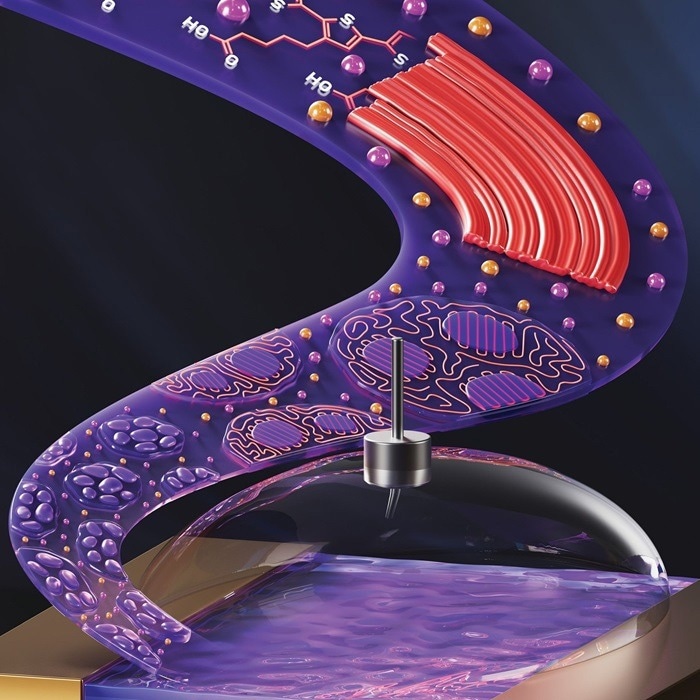Reviewed by Lexie CornerMay 22 2024
ChBE and Lehigh University researchers are developing new materials for environmental, biomedical, and the Internet of Things (IoT) sensor applications. These sensors will be more energy-efficient and have better signal quality for accurate readings.
 Schematic representation of an organic electrochemical transistor. Image Credit: Ella Marushchenko
Schematic representation of an organic electrochemical transistor. Image Credit: Ella Marushchenko
The materials used in sensors ultimately dictate how they will be used. For example, silicon-based devices allow for extremely quick processing in computers and smartphones but are not flexible enough for physiological monitoring. They also necessitate a lot of energy to manufacture.
Elsa Reichmanis, a Professor at Lehigh University and the Carl Robert Anderson Chair in the Department of Chemical and Biomolecular Engineering, recently received funding from the National Science Foundation for her proposal to find new materials platforms that would form the foundation of effective sensors (for application in environmental, physiological, and IoT fields), while improving the energy efficiency of fabrication processes.
We’ll be creating the polymers that could be the building blocks of future sensors. The systems we’re looking at have the ability to interact with ions and transport ionic charges, and, in the right environment, conduct electronic charges.
Elsa Reichmanis, Professor and Study Lead Researcher, Lehigh University
Thomas Gartner, an Assistant Professor of Chemical and Biomolecular Engineering at P.C. Rossin College of Engineering and Applied Science, contributed to the study.
The organized polymer network's ionic charge can effectively “dope” the polymer's charge, turning it into a semiconductor.
And then as a semiconductor with very low applied voltages, there will be charge transport, which can then lead to an electronic signal readout that can tell you what's happening.
Elsa Reichmanis, Professor and Study Lead Researcher, Lehigh University
She also mentions that the network will be functionalized to interact with various species. Overall, the functionalized material, capable of acting as a semiconductor, could find applications across a range of fields.
They could be used in biomedical sensors to react to different bacteria or a virus or changes in metabolites. Environmental sensors could be used in atmospheric monitoring to detect various pollutants, and where they are, and in what concentrations. And for Internet of Things applications, these sensors could allow workstations to feed information using wireless signaling.
Elsa Reichmanis, Professor and Study Lead Researcher, Lehigh University
Reichmanis, Gartner, and their team will specifically investigate the types of polymers and functionalities that can facilitate organic mixed ion-electron conduction, enabling the transportation of both ions and electrons. Thanks to the improved signal-to-noise ratio made possible by the ability to support the transport of both, the user can ascertain whether something is actually there. Additionally, it enables low-voltage operation, which is crucial given that devices may be used on or inside humans.
Reichmanis said, “We’ll be researching the chemistries involved, but then simultaneously, from a modeling simulation perspective, how are these ions actually interacting with the polymers and their functionalities on a more fundamental level? What is the interaction between ion transport and electron transport?”
Ultimately, Reichmanis says, the goal is to broaden the choice of building block materials, expand the functionalities that support mixed conduction, and come to a better understanding of what mixed conduction is really about.
Reichmanis concluded, “We have the opportunity to develop something within a real area of need, and because these devices are so wide-ranging, it opens up opportunities for much broader collaborations.”